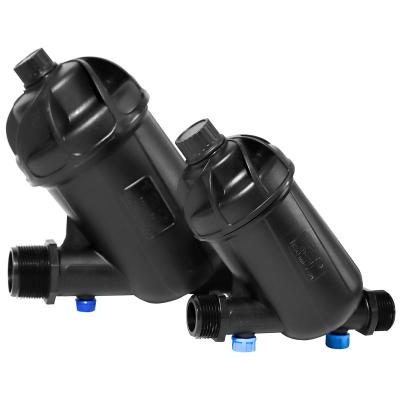Explain the water requirements of various fruit trees in orchard irrigation management in detail
Water is the source of all things. Without water, there is no life. Plant growth is also indispensable for the nourishment of water. Reasonable use of water resources can make fruit trees grow stronger, increase fruit tree yields, and improve fruit trees' annual yield and longevity. To exert the good influence of water on fruit trees, timely irrigation and drainage must be carried out to meet the growth and development needs of fruit trees.
The water requirements of fruit trees are as follows:
Plant water demand includes two aspects: physiological water demand and ecological water demand. Physiological water requirement is the water required for various physiological activities (such as transpiration, photosynthesis, etc.) during plant life. Ecological water demand refers to the water needed to create a good growth environment for the growth and development of plants. These two aspects of water demand are usually achieved through leaf transpiration and evaporation between plants. The sum of plant leaf transpiration and inter-plant evaporation is called plant water requirement. Plant water demand is generally expressed by the amount of water per unit area, in m3/m2, or the depth of the water layer, in millimeters.
The law of water demand for fruit trees is an important basis for rationally arranging irrigation and drainage work, scientifically adjusting the water status of the orchard, meeting the water requirements of fruit trees in a timely and appropriate amount, and ensuring high-quality, high-yield and stable production. The water requirement of fruit trees has the following characteristics.
(1) Different types of fruit trees have different requirements for water. Different types of fruit trees have different morphology and growth characteristics. All fruit trees with long growth period, large leaf area, fast growth, well-developed root system, and high yield require water. Both are larger; on the contrary, the water demand is smaller. Apples, pears, peaches, grapes, citrus, etc. require more water than jujube, persimmon, chestnut, ginkgo and other fruit trees. Pears require more water than peaches, and persimmons require more water than chestnuts. There are also differences in water requirements between different varieties of the same fruit tree. Fuji in apples requires more water than Kokuko, and Fujiminori in grapes requires more water than Kyoho. According to the water demand, fruit trees can be divided into three categories: citrus, apples, pears, grapes, etc. require high water; peach, persimmon, bayberry, loquat, etc. require medium water; dates, chestnuts, figs, ginkgo, etc. require less water .
(2) The same fruit tree has different water requirements in different growth stages and different phenological periods. In the first half of the annual growth cycle of the fruit tree, there is sufficient water supply to facilitate growth and fruiting. In the second half of the year, it is required to control water to ensure timely stop of the growth and timely entry of the fruit tree. During the dormant period, make preparations for overwintering. According to local climate conditions, during the following phenological periods, if the soil moisture content is low, irrigation must be carried out.
① From before and after germination to flowering period: If there is sufficient water in the soil at this time, it can strengthen the growth of new shoots, increase leaf area, increase photosynthesis, and normalize flowering and fruit setting, laying the foundation for high yields of the year. In northern China, it is mostly spring drought and less rain at this time, and adequate irrigation is more important.
② New shoot growth and young fruit swelling period: this period is often referred to as the critical period of water demand for fruit trees. At this time, the physiological function of the fruit tree is the most vigorous. If the water is insufficient, the leaves will take the water of the young fruit, causing the young fruit to shrink and fall off. For example, in severe drought, the leaves will also take water from the inside of the absorbing root tissue, which will affect the normal process of root absorption, resulting in weakened growth and a significant decrease in yield. In the rainy areas in the south, this period is the normal rainy season. In addition to the uniform supply of soil moisture, attention should also be paid to drainage.
③The period of rapid fruit swelling: For most major deciduous fruit trees, this is not only the period of rapid fruit swelling, but also the period of flower bud differentiation. At this time, timely irrigation can not only meet the water requirements of fruit hypertrophy, but also promote the healthy differentiation of flower buds. In this way, while increasing the yield, it also forms a large number of effective flower buds, creating conditions for successive years of high yield.
④ Before and after fruit picking and dormancy period: In arid areas in autumn and winter, irrigation can store enough water in the soil at this time, which will help the decomposition of fertilizers, thereby promoting the growth and development of fruit trees in the following spring. For most deciduous fruit trees in the north, it is not advisable to irrigate before the harvest time, so as not to reduce the quality or cause fruit cracking. The fruit trees in cold regions are irrigated with frozen water once before the soil freezes, which is very beneficial to the fruit trees overwintering.
(3) Different natural conditions in the region have different water requirements for fruit trees. Different fruit tree growing areas have different climates, topography, soils, etc., and their water requirements are also inconsistent. High temperature, strong sunshine, strong wind, dry air, increased leaf surface transpiration and evaporation between plants, and increased water demand.
(4) Agricultural technical measures also have an impact on the water demand of the orchard. Under the conditions of reasonable deep ploughing, dense planting and rich fertilizer, the water demand will increase, but it is not a certain proportion. For example, when the planting density of fruit trees increases exponentially, the water demand does not increase exponentially. This is because when the planting density increases, the transpiration intensity per unit area decreases and the evaporation between plants also decreases. In short, the water demand characteristics of fruit trees are complex and changeable. Therefore, orchard irrigation must be based on actual conditions, which vary with climate and orchard management conditions.



